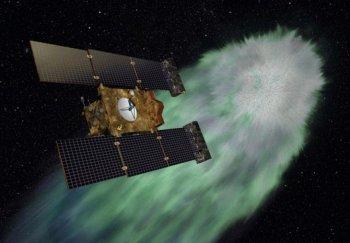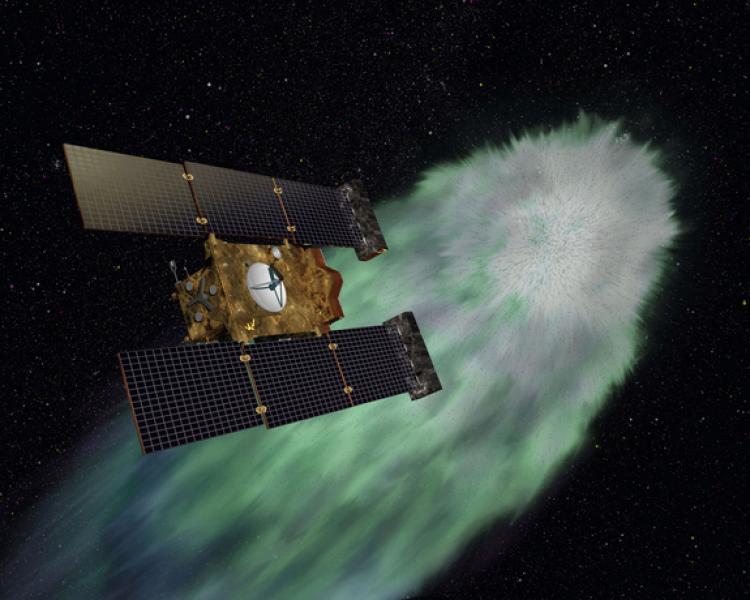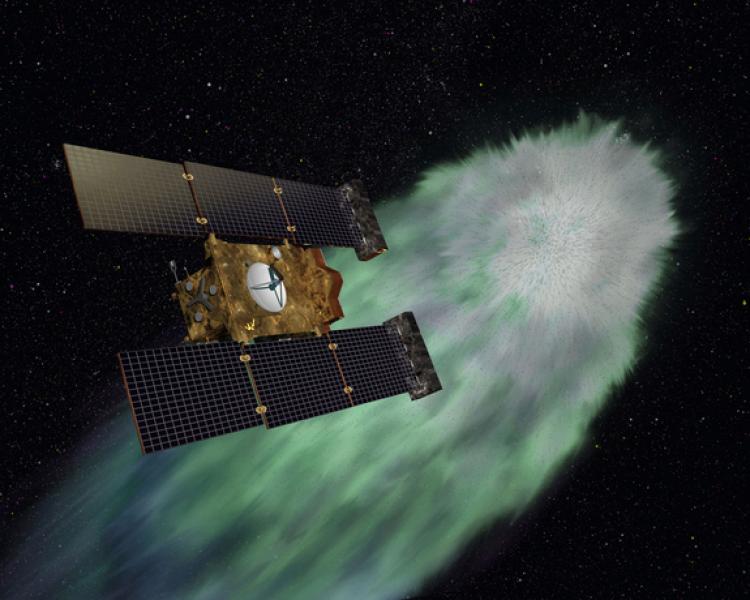Watch the live images from NASA here.
Comet Flyby on Valentine’s Day: NASA’s Stardust Captures Images of Tempel-1
Stardust, the veteran NASA spacecraft, is hurtling towards its Valentine’s Day comet flyby at around 24,000 mph, destination Tempel-1.

Comet Flyby on Valentine's Day: Comet Tempel 1 has been the target of two NASA missions. Here, an artist envisions what the approach of NASA's Stardust-NExT spacecraft may look like when it arrives at Comet Tempel 1 on Feb. 14, 2011. Courtesy of NASA/JPL/Cornell/LMSS
|Updated:





